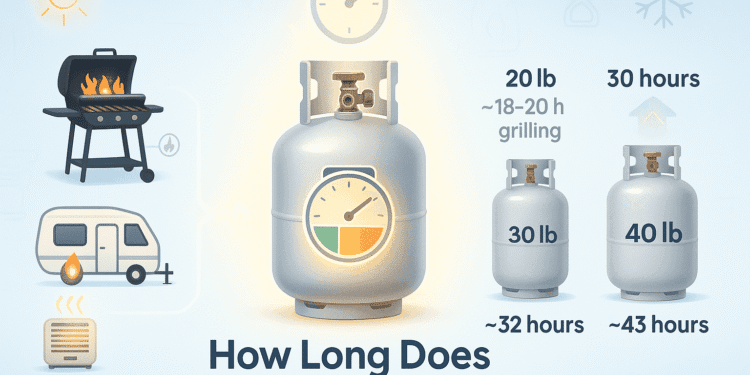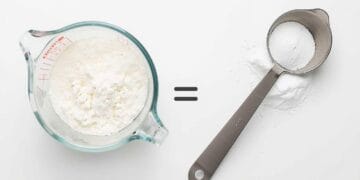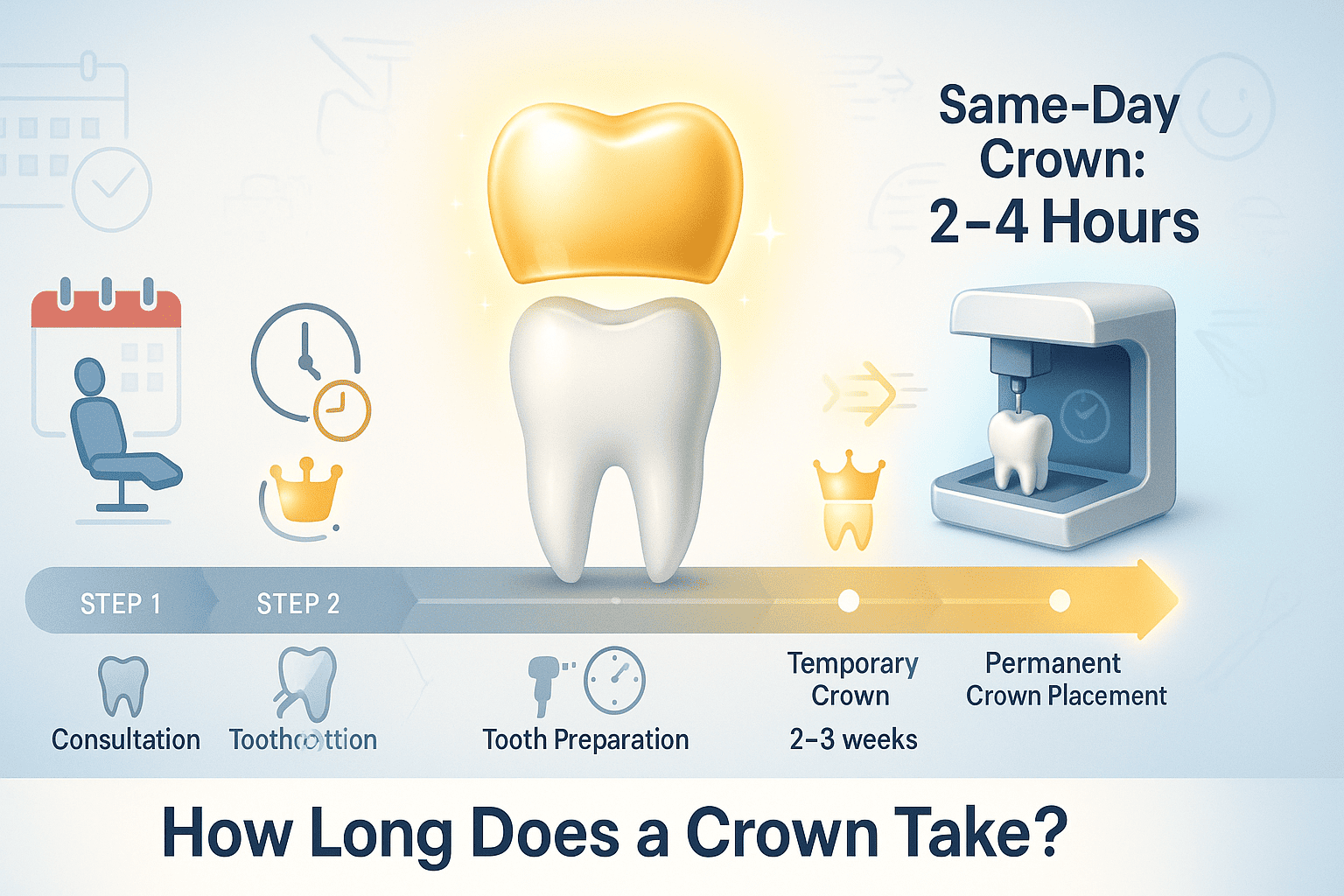How Long Does a Propane Tank Last: Your Complete Guide to Propane Tank Duration
Ever found yourself in the middle of a backyard barbecue when your grill suddenly goes cold? Or maybe you’re planning an RV trip and wondering if your propane tank will last the entire journey? You’re not alone in asking, “How long does a propane tank last?” This question keeps many propane users up at night, and rightfully so.
The truth is, propane tank duration isn’t a one-size-fits-all answer. It’s like asking how long a car’s gas tank lasts – it depends on the size of the tank, how you’re driving, and what you’re powering. But don’t worry, we’ve got you covered with everything you need to know about propane tank lifespan.
Understanding Propane Tank Basics
What is a Propane Tank?
Before diving into duration, let’s get our bearings straight. A propane tank is essentially a steel container designed to hold liquefied petroleum gas under pressure. Think of it as a portable energy storage unit that can power everything from your weekend grill sessions to heating your entire home.
These tanks come in various shapes and sizes, but they all serve the same fundamental purpose: storing propane safely until you need it. The beauty of propane lies in its versatility – it burns clean, provides consistent heat, and remains stable in various weather conditions.
Common Propane Tank Sizes
You’ll typically encounter several standard propane tank sizes in the market. The most popular ones include 20-pound, 30-pound, and 40-pound tanks, with each number referring to the weight of propane the tank can hold, not the tank’s total weight.
The 20-pound tank is the household favorite, commonly used for grilling and small heating applications. Meanwhile, larger tanks like 30 and 40-pounders are often chosen for extended use or higher-demand applications like RV living or heating larger spaces.
Factors That Determine Propane Tank Lifespan
Tank Size and Capacity
Here’s where math meets reality. A 20-pound propane tank holds approximately 4.7 gallons of liquid propane, which translates to about 430,000 BTUs of energy. But here’s the kicker – you’re not just dealing with simple division when calculating usage time.
Tank capacity directly correlates with duration, but it’s not a linear relationship. A larger tank doesn’t just last longer; it also provides more consistent pressure output, which can affect appliance efficiency and overall performance.
Usage Patterns and Appliance Efficiency
Your usage habits play a massive role in determining how long your propane tank lasts. Are you a weekend warrior who fires up the grill occasionally, or do you rely on propane for daily cooking and heating? The difference is like comparing a casual jogger to a marathon runner – both are moving, but at vastly different consumption rates.
Modern appliances are generally more efficient than their older counterparts. A newer propane grill with better insulation and more precise temperature control will stretch your propane further than that vintage model from the 1980s.
Weather Conditions and Seasonal Variations
Mother Nature has a say in your propane consumption too. Cold weather affects propane in two ways: it reduces tank pressure (making your appliances work harder) and increases your heating needs. It’s like trying to squeeze honey from a cold bottle – everything moves slower and requires more effort.
Temperature Effects on Propane Consumption
In freezing temperatures, propane doesn’t vaporize as efficiently, meaning your tank might seem “empty” even when it contains liquid propane. This phenomenon can catch many users off guard, especially during winter camping trips or cold-weather grilling sessions.
How Long Different Tank Sizes Last
20-Pound Propane Tank Duration
The beloved 20-pound tank is the Swiss Army knife of propane containers. For typical grilling usage (about 2-3 hours of cooking time per week), you can expect this tank to last approximately 18-20 hours of actual burn time, which translates to roughly 4-6 weeks of regular use.
But let’s break this down further. If you’re using a standard 40,000 BTU grill on medium heat, you’re consuming about 20,000 BTUs per hour. Simple math tells us that 430,000 BTUs divided by 20,000 BTUs per hour gives you about 21.5 hours of cooking time.
30-Pound Propane Tank Lifespan
Step up to a 30-pound tank, and you’re looking at approximately 7 gallons of liquid propane or about 645,000 BTUs. This translates to roughly 32 hours of grilling time under the same conditions as our 20-pound example.
These tanks are particularly popular among RV enthusiasts and those who do more intensive cooking or heating. They strike a nice balance between portability and capacity.
40-Pound Propane Tank Longevity
The 40-pound tank is where things get serious. With about 9.4 gallons of capacity (approximately 860,000 BTUs), you’re looking at around 43 hours of standard grilling time. This makes it ideal for extended camping trips, large gatherings, or as a backup for homes that rely heavily on propane.
Comparison Chart for Different Sizes
To put things in perspective, imagine propane tanks as different-sized coffee cups. The 20-pound tank is your standard mug – perfect for daily use but needs frequent refilling. The 30-pound is like a large travel mug – good for longer outings. The 40-pound tank? That’s your coffee pot – designed for extended use and multiple people.
Propane Usage by Appliance Type
Grilling and BBQ Usage
Grilling is probably the most common propane application for homeowners. A typical gas grill uses between 20,000-40,000 BTUs per hour, depending on the size and heat setting. But here’s something interesting – most people don’t grill on high heat for extended periods.
During a typical grilling session, you might use high heat for searing (10-15 minutes) and medium heat for cooking (20-30 minutes). This variable usage pattern means your actual consumption is often lower than the maximum rated BTU output.
Heating Applications
Propane heaters are consumption champions. A small portable heater might use 4,000-9,000 BTUs per hour, while larger space heaters can consume 30,000-45,000 BTUs per hour. If you’re using propane for home heating, you’re looking at significant consumption rates that can drain even large tanks relatively quickly.
RV and Camping Usage
RV living presents unique propane challenges. You’re typically running multiple appliances – the refrigerator, water heater, furnace, and stove – sometimes simultaneously. An RV refrigerator alone can use 1,500-3,000 BTUs per hour when running on propane mode.
Industrial and Commercial Applications
Commercial and industrial applications are in a league of their own. These setups often require constant, high-volume propane consumption that can drain large tanks in days or even hours, depending on the application.
Calculating Your Propane Consumption
BTU Requirements and Calculations
Understanding BTUs (British Thermal Units) is crucial for accurate propane planning. One pound of propane contains approximately 21,500 BTUs of energy. This means your 20-pound tank holds about 430,000 BTUs of usable energy.
To calculate consumption, you need to know your appliance’s BTU rating and multiply it by your usage hours. For example, if your grill uses 30,000 BTUs per hour and you cook for 2 hours weekly, you’re consuming 60,000 BTUs per week.
Monitoring Your Usage Patterns
Keep a simple log of your propane usage for a few weeks. Note when you start using a new tank and when it runs out, along with what appliances you used and for how long. This real-world data is worth more than any theoretical calculation.
Signs Your Propane Tank is Running Low
Visual Indicators
The warm water test is a classic way to check propane levels. Pour warm water down the side of your tank and feel for temperature differences. The metal will feel cooler where liquid propane remains inside. It’s like having X-ray vision for your propane tank!
You can also invest in a propane gauge or scale. These tools take the guesswork out of monitoring your fuel levels and can prevent those awkward moments when your tank runs dry mid-cookout.
Performance Changes in Appliances
Your appliances will often tell you when propane is running low. Grills might struggle to maintain high temperatures, flames might appear more yellow than blue, or your heater might not warm as effectively. These performance changes are your early warning system.
Tips to Maximize Propane Tank Life
Proper Storage Techniques
Store your propane tanks upright in a well-ventilated, dry area away from direct sunlight and heat sources. Think of propane storage like wine storage – environment matters. Extreme temperatures can affect tank pressure and potentially reduce efficiency.
Never store propane tanks indoors or in enclosed spaces like basements, garages, or sheds. Propane is heavier than air and can accumulate in low areas if there’s a leak.
Maintenance and Care Tips
Regular maintenance extends both tank life and efficiency. Check connections for leaks using soapy water – bubbles indicate escaping gas. Keep tank valves clean and protected from debris. Replace old or damaged regulators and hoses as needed.
Safety Considerations
Safety should always be your top priority. Never attempt to repair a damaged propane tank yourself. If you smell propane (that distinctive rotten egg odor), shut off the valve immediately and move the tank to an open area away from ignition sources.
When to Replace vs. Refill Your Tank
This decision often comes down to convenience and cost. Tank exchanges are quick and convenient – you drop off your empty tank and pick up a full one. However, you might not get a completely full tank, and you’re essentially renting the cylinder.
Refilling your own tank is usually more economical and ensures you get a complete fill. Plus, you maintain ownership of your tank, which can be advantageous if you have a newer or higher-quality cylinder.
Cost-Effective Propane Usage Strategies
Smart propane usage starts with understanding your consumption patterns. Consider upgrading to more efficient appliances if you’re a heavy user. Use windscreens on outdoor grills to maintain heat more efficiently. Keep your appliances well-maintained for optimal performance.
Buying propane in bulk or during off-season periods can also save money. Many suppliers offer discounts for multiple tank purchases or seasonal promotions.
Conclusion
Understanding how long your propane tank lasts isn’t just about numbers – it’s about planning, efficiency, and peace of mind. Whether you’re grilling for a weekend barbecue or heating your RV during a cross-country adventure, knowing your propane consumption patterns helps you stay prepared and avoid those frustrating moments when your fuel runs out unexpectedly.
Remember, tank duration depends on size, usage patterns, weather conditions, and appliance efficiency. A 20-pound tank typically provides 18-20 hours of grilling time, while larger tanks offer proportionally longer service. By monitoring your usage, maintaining your equipment, and storing your tanks properly, you can maximize both safety and efficiency.
The key is finding the right balance between tank size, usage needs, and practical considerations like storage and transportation. With this knowledge in hand, you’ll never have to worry about running out of propane at the worst possible moment again.
Frequently Asked Questions
1. How can I tell if my propane tank is empty without a gauge? You can use the warm water test by pouring warm water down the side of the tank and feeling for temperature differences. The area with liquid propane will feel cooler. Alternatively, you can weigh the tank – subtract the tare weight (stamped on the tank) from the total weight to determine remaining propane.
2. Does propane go bad or expire over time? Propane itself doesn’t expire or go bad – it can last indefinitely when stored properly. However, the tank and its components (valves, regulators, hoses) do have expiration dates and safety certifications that need periodic renewal or replacement.
3. Why does my propane tank feel cold during use? This is completely normal! As propane converts from liquid to gas, it absorbs heat energy, causing the tank to feel cold. In extreme cases, frost or ice might even form on the outside of the tank during heavy usage.
4. Can I use a propane tank that’s been sitting unused for several years? Yes, but have it inspected first. Check the tank certification date (tanks need recertification every 12 years), inspect for rust or damage, and test all connections for leaks before use. If in doubt, have a propane professional evaluate it.
5. What’s the difference between propane tank capacity and actual usable propane? Propane tanks are never filled to 100% capacity for safety reasons – they’re typically filled to about 80% to allow for thermal expansion. So a “20-pound” tank actually holds about 16-17 pounds of propane when properly filled, which is why actual usage times might be slightly less than theoretical calculations.









